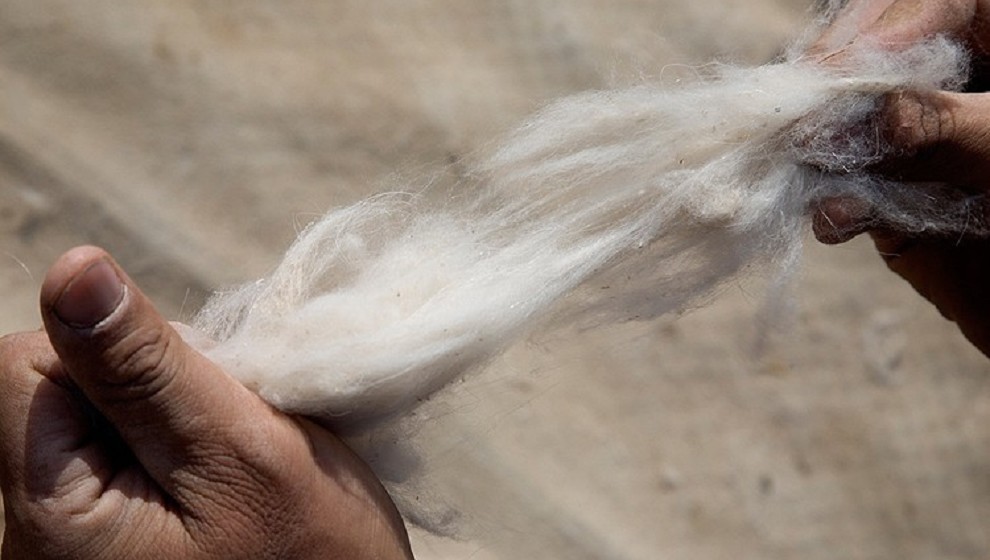Exploring the Different Sorts Of Cashmere a Natural Fiber for Ultimate Deluxe
Cashmere, a natural fiber, is usually related to high-end and convenience. However, not all cashmere is produced equivalent. From the highly soft Mongolian variety to the lightweight heat of Indian Pashmina, each kind presents its own special features and allure. The a lot more economical Chinese cashmere, the typical Scottish variant, and the high-end Italian mix, all inform a different story of this exceptional fiber. As we untangle the world of cashmere, a much deeper understanding of its real value and elegance starts to arise.
Comprehending the Extravagant Nature of Cashmere
Cashmere, often associated with luxury and comfort, holds an unique allure on the planet of natural fibers. This soft, lightweight material is coveted for its outstanding heat and exceptional longevity. Unlike various other all-natural fibers, cashmere combines insulation with breathability, using exceptional comfort across varying temperatures. Its glossy finish and soft texture add to its premium allure, warranting the premium rate that often comes with cashmere garments. Additionally, cashmere's integral crease resistance and elasticity enhance its worth, making it a recommended option for premium apparel and devices. In spite of its delicate look, cashmere possesses a surprising strength, able to maintain its shape and luxurious feel with time. This special blend of features cements cashmere's position as a sign of beauty and extravagance.
Simply What Is Cashmere and Where Does It Come From?

Offered these extraordinary qualities, one may question the origin and make-up of this luxurious fiber. Cashmere is obtained from the soft undercoat of cashmere goats, largely found in Mongolia, China, Iran, and Afghanistan - is cashmere a natural fiber. These goats are adjusted to rough climatic conditions, generating an extremely fine, soft underfur as a protection versus the bitter cold. This underfur, or undercoat, is what is harvested for cashmere. Each spring, when the goats normally lost their winter season coat, farmers brush out the great underhair, leaving the coarser hair behind. This thorough process adds to the shortage and high expense of cashmere. With its beginning in the rough landscapes of Asia, cashmere is a testament to nature's capability to generate deluxe from adversity.
Decoding the Different Sorts Of Cashmere
Understanding the different kinds of cashmere is crucial to appreciating the quality and one-of-a-kind attributes of this glamorous fabric. Usually, cashmere is classified into 3 types: raw, virgin, and reused. Deciphering these kinds is the very first step in recognizing the exclusivity and value of cashmere.

The Distinct Attributes of Each Kind Of Cashmere
Having actually discovered the various groups of cashmere, it emerges that find here each kind flaunts its unique collection of features. Mongolian cashmere, as an example, is renowned for its superior quality, due to Mongolia's harsh winter seasons that create longer and finer fibers. On the other hand, Chinese cashmere is usually more budget-friendly, though its shorter fibers can decrease resilience. Scottish cashmere is celebrated for its splendid gentleness, an outcome of the traditional water washing process making use of Scotland's soft water. Italian cashmere, at the same time, is renowned for its masterful blending and tinting methods, making it vibrant and functional. Indian cashmere, likewise known as Pashmina, is cherished for its amazing agility and warmth. Each kind, therefore, contributes to the textile's track record for luxury.
Why Cashmere Is the Epitome of High-end in Style
Cashmere holds a well-regarded placement in the globe of style, regarded as a sign of high-end and elegance (is cashmere a natural fiber). Cashmere is obtained from the great undercoat of Himalayan goats, known for their exceptional high quality fiber. Cashmere's unrivaled comfort and resilience make it a popular material in the production of premium garments.
The Refine of Making Cashmere: From Goat to Garment
The trip of cashmere, from being an undercoat of a Himalayan goat to an elegant garment, is a detailed one. This blend is after that painstakingly divided, with only the soft down utilized for cashmere. From goat to garment, each action is a testimony to the skill, virtuosity and patience entailed in crafting cashmere.

Verdict
To conclude, cashmere, with its natural elegance and unparalleled convenience, rules supreme in the world of luxury style. The diversity in types, varying from the soft Mongolian, light-weight Indian Pashmina, affordable Chinese, typical Scottish, to the colorful Italian, exposes the convenience of this all-natural fiber. The scrupulous procedure of transforming it from a goat to a garment even more includes in its exclusivity, making cashmere the epitome of elegance and luxury.
Cashmere, an all-natural fiber, is commonly associated with luxury and convenience (is cashmere a natural fiber).Cashmere, frequently linked with high-end and convenience, holds a special allure in the globe of natural fibers. Unlike various other all-natural fibers, cashmere combines insulation with breathability, using unrivaled convenience across varying temperatures. Cashmere is these details obtained from the soft undercoat of cashmere goats, primarily discovered in Mongolia, Your Domain Name China, Iran, and Afghanistan. Cashmere is derived from the fine undercoat of Himalayan goats, recognized for their exceptional top quality fiber